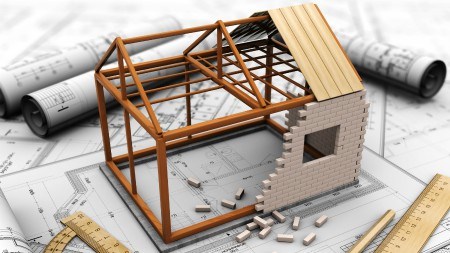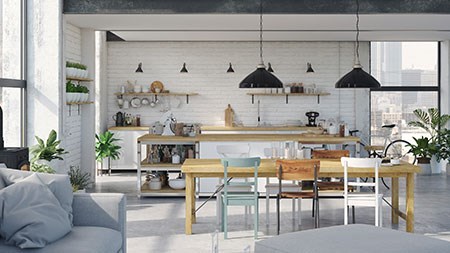There are few things more satisfying than moving into a new home that you have created yourself. Taking on a building project may seem daunting, but if you do your homework beforehand and keep following up throughout the construction phase, you can make it work.
Budget
Top of the list of things to do is to establish a realistic budget – and stick to it.
If you need a building loan to enable you to build, be aware that banks view applications for loans for new builds differently to those for existing homes. You will probably need to put down a larger deposit, and may qualify for a smaller amount.
Planning
Every new house needs building plans, a site, a building contractor, and a project manager – a job you can undertake yourself.
Once you have decided on a site, it’s time to plan the design of the home. Building plans need to be submitted to your local authority for approval before building can start, so it helps to have them drawn up by an architect or a draughtsperson who understands the municipal requirements. Once the plans have been taken care of it’s time to look for a building contractor, and here you should turn to the National Home Builders Registration Council.
NHBRC
The National Home Builders Registration Council (NHBRC) - established in 1998, in accordance with the provisions of The Housing Consumers Protection Measures Act (Act No 95 of 1998) – has a mandate to ensure compliance to regulated building industry standards.
The NHBRC publishes and distributes a list of its registered home builders and those who have been de-registered or suspended. Through the verify builder and enrolment searches you will be able to check whether your builder is an accredited builder and whether your house has been enrolled with the NHBRC.
You will be responsible for the fee for enrolling your project. However, this offers several benefits including major structural warranty cover and access to the council’s complaints procedure, which aims to ensure that builders meet their obligations.
The NHBRC’s home builders manual sets minimum quality standards that builders need to meet, and the council carries out quality inspections during construction. If a defect occurs and you are having difficulty with your builder, the NHBRC will investigate the complaint, and if found valid, will contact the builder and insist that the problems are attended to within a specific time frame.
Appointing contractors
Before appointing a building contractor:
- Check the company’s reputation by phoning the NHBRC or look on its website (0860 200 824 www.nhbrc.org.za).
- Ask to see the builder’s current NHBRC registration certificate.
- Talk to other home owners who have made use of the builder’s services in the past.
- Section 13 of the act requires a home builder to enter into a written agreement with a housing consumer (client). The contract must be signed by all parties. It must set out the material terms including the financial obligations of the client, and must contain the specifications for materials to be used in the construction of the home. It must also contain plans that reflect the dimensions and measurements of the home, as approved by the local authority.
- Before signing the contract make sure you have read it and understood it, and that the description of the work to be done and specifications of materials, finishes and fittings to be provided meet your requirements. Variations to these during the course of the contract can be very expensive.
- If you are in any doubt as to what is being offered, ask the builder to clarify or get legal advice.
- Keep a copy of the written agreement - and all other documents relating to the project.
- Never pay the builder in advance of work being done – only authorise payment once work has been completed to your satisfaction.
Choosing finishes and fittings
Finishes and fittings are what turn a house into home, so it pays to spend some time and effort on getting things right. Lifestyle magazines and décor websites can provide inspiration, and if your budget allows, ask an interior decorator to assist.
The first step is to draw up a list of your requirements and here it’s important to involve the whole family. Aim to get consensus on the living areas, and if possible, allow family members to personalise their own bedrooms or other individual spaces.
The next step is to decide on a budget for fittings and finishes. This can then be broken down into budgets for each room.
With priorities and budget set, it’s time to pay a visit to the local design centre if you are in a city. For those in smaller towns, a trip to one or more of the large building suppliers will give you a good idea of what is available to suit your style and price range.
Troubleshooting
When occupying your new home inspect it carefully, paying particular attention to:
- Sanitaryware - taps, toilet fittings and other plumbing installations.
- Fireplace surrounds, wall tiles and splash backs.
- Doors and windows – make sure they open and close properly.
- Electricity and water – make sure they are connected and in working condition.
- Check whether the extras you ordered have been provided.
- Ensure you have keys to all the locks and that they work properly.
- Make sure you have been shown where water stop valves and main electrical switches are located.
- Also check the stand to make sure that the boundaries are correctly and clearly marked, the site has been cleared of all debris, and that all contractual work and finishes are correct.
- Draw up a list of all problems and defects (snag list) and submit it to your builder within 90 days of the date of occupation. Keep a record of all correspondence.





